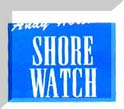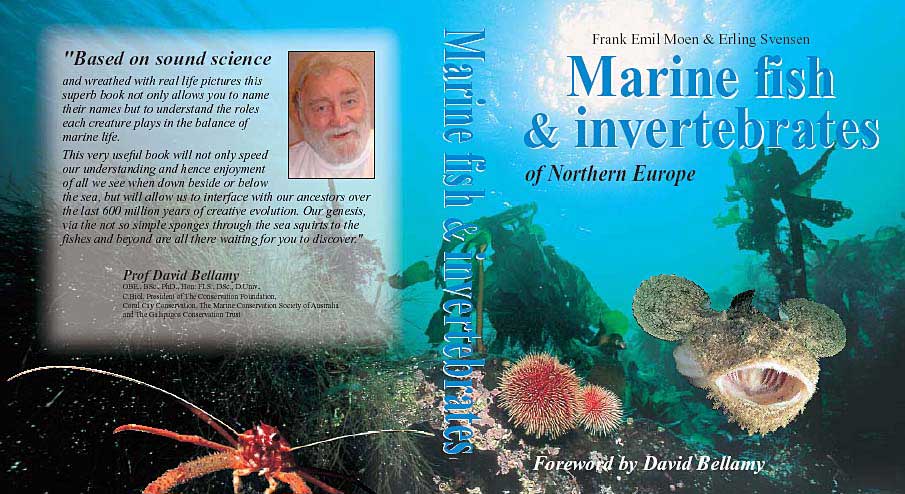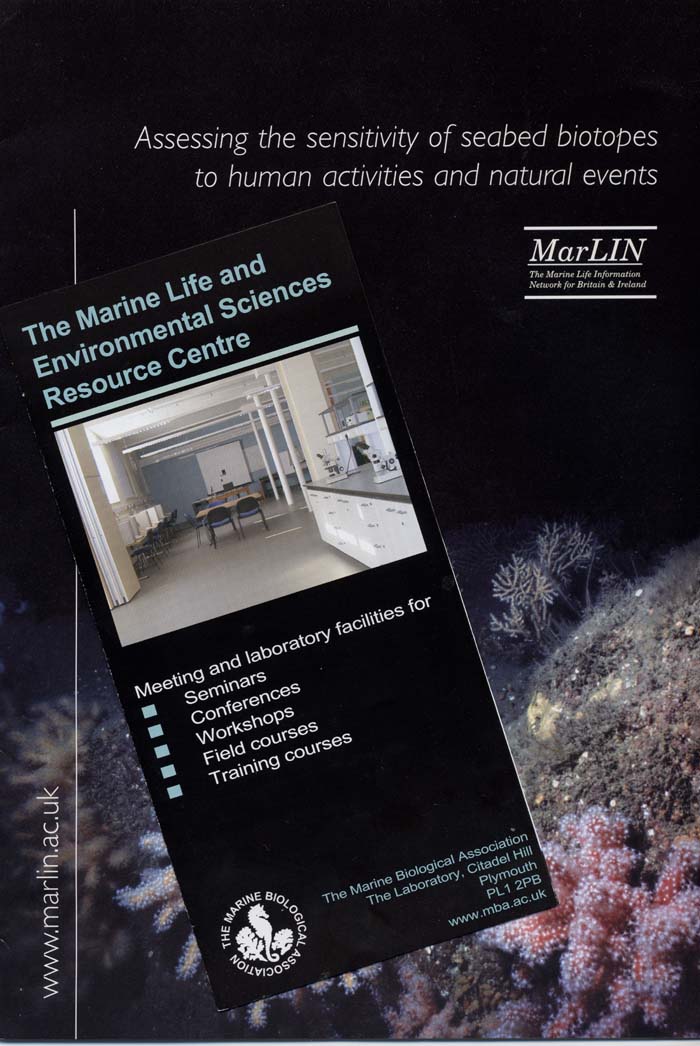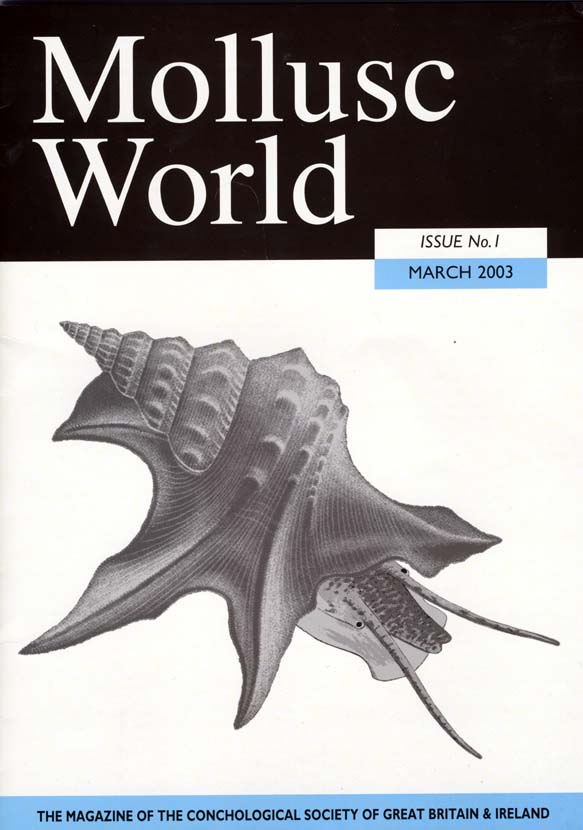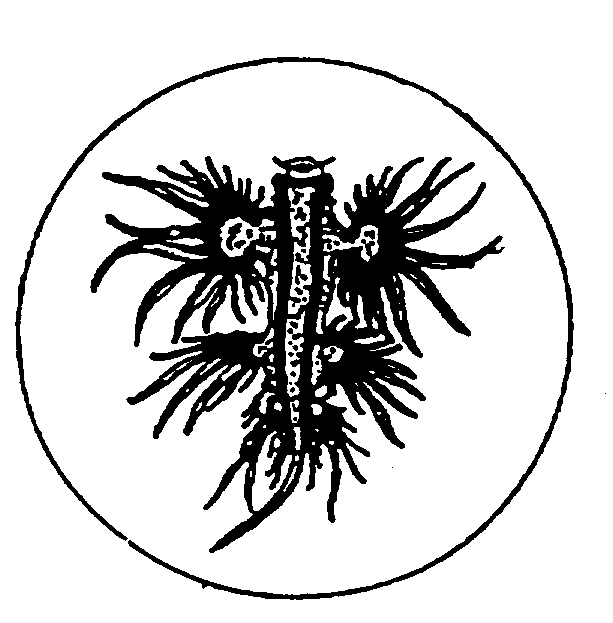
|
|
|
|
|
|
|
(BMLSS *** Site) |
|
|
|
|
|
|
|
|
|
Recommended Sites |
|
|
|
|
| FREE OFFER:
If you wish to receive a free issue of the Shorewatch Newsletter please write to the address on the Homepage with the request and enclose stamps to the value of 27 pence. This offer applies to UK residents only and is limited to the number of copies available. This offer expires on 28 February 2002. Do not forget to include your return address. |
|
|
References to articles on British marine life in other journals, new books and CD-ROMs, 2000 - 2006
Coastal Plankton
Photo Guide for European Seasby Otto Larink & Wilfried Westheide
ISBN 0-9522831-5-8 Available from:
Marine fish & invertebrates
of Northern Europe
Frank Emil Moen & Erling Svensen
In May 2004 the English edition of the very popular Norwegian Marine Fauna (Dyreliv I havet) was published. Prof. David Bellamy has written the foreword.
18 June 2004
A new film called Deep Blue from the makers of the Blue Planet opens in good
cinemas.
Trailer (Link).
Hazardous substances in the European marine environment - Trends in metals and persistent organic pollutants
Topic report No 2/2003This report provides an assessment of trends in concentrations of six hazardous substances in mussels and fish in Europe's seas since 1985. The trends are linked to reduction measures, foodstuff limit values and trends in inputs to coastal and marine waters. The results are presented in a series of maps.
21 August 2003'Atlas of cetacean distribution in north-west European waters'
The publication by the Joint Nature Conservation Committee (JNCC) of an atlas of their distribution in waters off north-western Europe. It is based on the sightings made by hundreds of observers over the past 25 years. The atlas is a first for these waters, and becomes the first globally to take full account of the variation between areas in the amount of searching that observers have carried out to gather the information.
Click on this text for the full information including ordering
Price £17.00 from the Natural History Book Service (www.nhbs.com), or phone +44 (0)1803 865913.
Assessing the sensitivity of seabed biotopes to human activities and natural events
MARLIN (Marine Life Information Network)+ MarLIN News
Issue 6 Spring 2003
Sealife Surveys: Identification Guide for Selected Underwater Species-------------------------------------------------------------------------------------------------------------------
MarLIN has published this new waterproof guide which is designed to support recording projects. The 45 species in the guide have been selected for their ease of recognition and their importance as species which play a key role in maintaining particular communities, are likely to be affected by global warming, or are non-native. The guide is produced in collaboration with the Seasearch programme, which is a nationwide diving survey of underwater habitats and species. Volunteers are taught about marine life, how to recognize what's important and how to make records under water.
You can obtain a copy of the guide for £3 including post and packing by sending a cheque to MarLIN, Marine Biological Association, Citadel Hill, Plymouth PL1 2PB. Cheques are to be made payable to ‘Marine Biological Association’. Copies are free to participants in organized surveys.
19 June 2003
SHRIMPING FOR FOOD AND FUN
Local shrimper Peter Talbot-Elsden, from Southwick, has produced a small booklet called “Shrimping for Food and Fun” about catching the brown shrimp around the coasts of Britain. The shrimps are caught in nets and the book features the various methods, firstly the push-netting seen over the sand in shallow water in spring off the Sussex coast. The famous Morecambe Bay shrimps were originally captured by cart shanker shrimping with a horse and cart in deeper water off the Lancashire coast, later replaced by a tractor. At Formby, they experimented with amphibious vehicles after World War II. Nowadays, most commercial shrimping on the east coast around King’s Lynn trawls from small boats using a net off the stern. Shrimps are often cooked on board.
The 28 page book contains 40 photographs of shrimping through the ages. It is available through Bookworms of Shoreham and other booksellers at £3.50.
The booklet is also available through the British Marine Life Study Society, but at £4 including postage and packing.Peter Talbot-Elsden manned the shrimp display at Adur World Oceans Day.
Secret Life of Rock Pools (Video)
Secret Life of Low tide (Video)
"The secret life of low tide" was filmed over 3 years for the Purbeck Marine Wildlife Reserve, the Marine Conservation Society and the WildlifeTrusts.
This video is an information packed guide to rockpooling, giving details on how to find the intertidal marine life.
Presented by marine biologist, Julie Hatcher, this production is an essential guide for anyone interested in life on our shores. With over 50 marine animals and seaweeds this is a very informative video.
Recommended for the younger viewer by Andy Horton
NEW CD-ROM
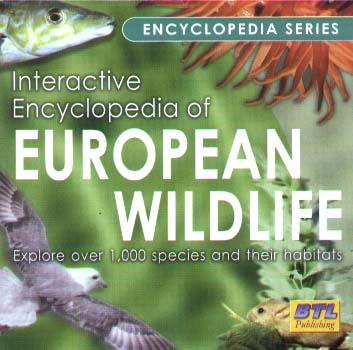
This CD-ROM has not been tested yet.
Available through the Kent Ornithological Society.
Further details in next month's TORPEDO Bulletin.
NOW AVAILABLE WITH THE CD-ROM
THE SPECIES
DIRECTORY OF THE MARINE FAUNA AND FLORA OF THE BRITISH ISLES AND SURROUNDING
SEAS.
Edited
by C. Howson and B. Picton
Ulster
Museum & the Marine Conservation Society 1997.
About
£27.50 (including CD-ROM 1999)
The project to collate the species that live in the seas off Britain is an ongoing project. The Directory is a list of all the species grouped systematically according to their scientific names, with a comprehensive bibliography. The 1997 edition, not available until 1998, is the latest list and is useful on the rare occasions (about once a week for me) that I have to look up a vagrant, unusual species that is not listed in the usual identification books.
Now available with the CD-ROM, this proves useful list of all the species for professionals, but it could be improved to make it more useful, e.g. facilities for biological recording and an interchange with Recorder 2000.
August 2001JNCC Report 310
Bycatch of marine turtles in UK and Irish waters
Publisher: Joint Nature Conservation Committee
ISSN 0963-8091
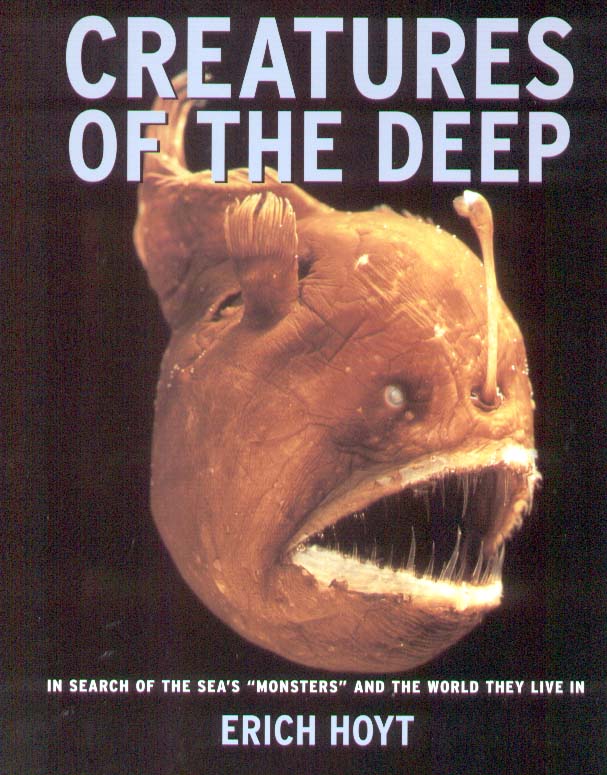
ISBN 1-55209-340-9

Photographic Guide to the
Sea & Shore Life
of Britain & North-west Europe
(Oxford University Press 2001)
ISBN
Pbk 0 19 850709 7
Hbk 0 19 850041 6This book contains too many errors and is not recommended for beginners.
BLUE PLANETAndrew Byaft, Alastair Fothergill and Martha Holmes
Foreword by Sir David Attenborough
Publication Date: 27th September 2001
Price: £24.99Our planet is a blue planet, over 70% of it is covered by the sea and yet,
less is known about the world's oceans than is known about the moon.
The book is published to accompany a major new landmark television series from the BBC Natural History Unit, (which has taken 5 years to film), The Blue Planet provides a definitive guide to this final frontier.
More Information
- CLICK ON THE IMAGE FOR THE OFFICIAL BBC BLUE PLANET WEB SITE
-
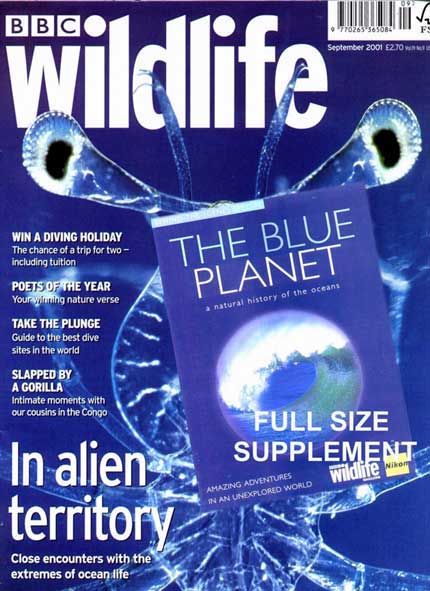
- The Hox Gene Cluster has a crucial function in body patterning during animal development. How and when this gene cluster originated is being clarified by recent data from Cnidaria, a basal animal phylum. The characterization of Hox-like genes from Hydra, sea anemones and jellyfish has revealed that a Hox gene cluster is extremely ancient, having originated even before the divergence of these basal animals.
BBC
Wildlife September 2000
including
a Special "Blue Planet" 32 page full size supplement.
The
whole issue is virtually dedicated to the marine world but the main 100
page magazine virtually full up with articles about life beneath the oceans
and a very long way down in the ocean depths, the
last and largest uncharted habitat on Earth. There
are photographs of some really strange critters of the depths and the microscopic
animals that comprise the surface plankton.
£2.70
in all major UK newsagents.
The
BBC1 television series "Blue Planet" begins on Wednesday
19 September 2001 at 9:00 pm.
Biologist
Autumn 2001 Volume 48 No. 4
Volunteers assess marine biodiversity
by Stewart M Evans, Judy Foster-Smith and Rachel Welch
(Dove Marine Laboratory, Newcastle University)
pages 168-172
SCOS
00/2
Scientific Advice
on Matters Related to the Management of Seal Populations: 2000
Under
the Conservation of Seals Act 1970, the Natural Environment Research Council
(NERC) has a duty to provide scientific advice to government on matters
related to the management of seal populations.
NERC
has appointed a Special Committee on Seals (SCOS) to formulate this advice
so that it may discharge this statutory duty.
This
document is available as a *.pdf electronic file, readable using
Acrobat Reader, from Peter
Haddow of the Seal Conservation Society. BMLSS members can request
a copy from
Glaucus House.
22
June 2001
National
Biodiversity Network
Guidelines
on data management for
Local
Record Centres and marine data
 June
2001
June
2001
OCEAN Guides
Whales &
Dolphins of the European Atlantic
The
Bay of Biscay and the English Channel
by
Graeme Cresswell & Dylan Walker
and
Rob Still & Phil Coles (artwork)
and
individual photographers
Edited
by Andy Swash
Published
by Wild Guides
ISBN
1-903657-00-8
This is the best and handiest small guide, and probably better than any of the larger guides for identifying the cetaceans at sea. Andy Horton
There
are 14 colour plates which depict typical views of cetaceans at sea. They
have been produced using the latest digital image technology and include
images of some species never previously published. These photographs are
the real advantage of the book. The images are so good and depict their
appearance as seen by a viewer from a boat that should considerably help
with the tricky business of identifying the cetaceans.
The
text covers the key identification features of each species, emphasising
the differences between similar species and includes information on status,
behaviour and distribution. Colour distribution maps accompany the text
for each species.
The book costs £8.00 plus £1.00 post and packing in the UK. Copies of the book can be obtained from:
WildGuides (Click on the text for the address)
ORCA
Organisation Cetacea
UKCetnet
Whale
& Dolphin Conservation Society
January 2001
Ancient Origin of the Hox Gene Cluster
David E.K. Ferrier and Peter W.H. Holland
Article in:
Nature Reviews
January 2001, Vol. 2 No. 1
This
is the best issue yet by the Marine Conservation
Society.
Received
9
December 2000
28
November 2000
The
film The Great Storm is out on video for sale in the UK.
The
film is all action and barely watchable. The book is recommended though
and the television documentary is passable.
23
November 2000
Biologist
November 2000
Making
scents of sex underwater
by
Matt G Bentley and Gordon J Watson (University of Newcastle UK)
The great
scallop: an endangered species
by
Richard P Briggs (Dept. of Agriculture and Rural Development for Northern
Ireland).
16
October 2000
TV
Channel 4 9:00 pm
The
Maelström
8 October
2000
BBC
2 Natural World
Otters,
Lutra lutra
narrated
by Sally Magnusson
More
Information
20
September 2000
The
Worldwide Fund for Nature (UK) publish
WWF-UK
Marine Health Check
by
Chris Berry 2000
The
Report is at:
http://www.wwf-uk.org/news/pdfs/mhcr.pdf
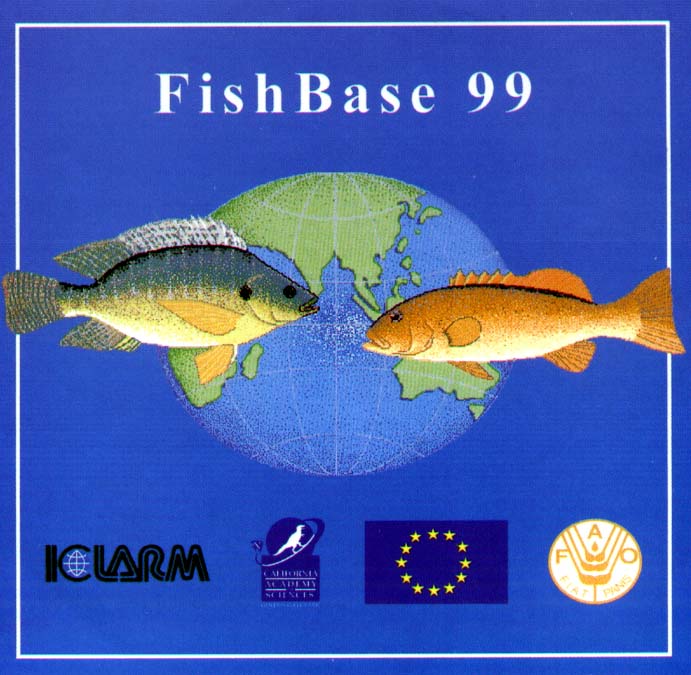
CD-ROM
Click on the image to find out more from their web pages.
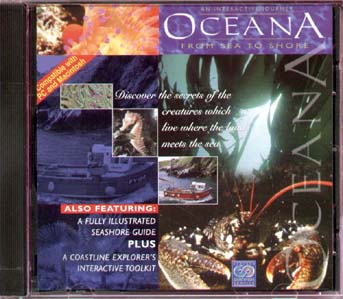
Interactive CD-ROM from Project Explore, Caradon District Council, Looe, Cornwall.
ISBN 0-948410-02-7The introductory commentary is by Jeremy Curry, and it is designed for the younger (8 years +) student of the seashore.
It contains basic information based on experience of visitors to ‘Project
Explore’ at Looe.The Fully Illustrated Seashore Guide is most useful as it contains a colour
photograph of the common species found between the tides at Looe.
It contains a list of marine life and Cornish web sites.
Price: £8.99Project by Julia Moss, Coast & Countryside Officer, Caradon Countryside Services.
Tel: 01503 263286 Fax: 01503 263266
http://www.southeastcornwall.co.uk
JNCC Annual Report 1999-2000
(available August 2000)
- Andy Horton's regular Shore Watch column in the Aquarist & Pondkeeper magazine has ceased.
- However in the June 2000 issue there is a special World Oceans Day issue on rockpooling on the shore.
The
North Atlantic Gray Whale
(Escherichtius robustus):
An historical outline based on Icelandic, Danish-Icelandic, English and Swedish sources dating from ca 1000 AD to 1792
Ole Lindquist, PhD
Occasional papers 1
the centre for environmental history and policy
Universities of St Andrews and Stirling, Scotland
March 2000
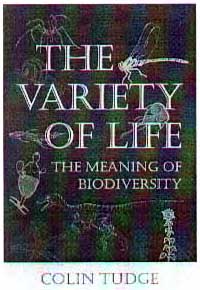 The
Variety of Life: A Survey and a Celebration of all the Creatures that have
ever lived, by Colin Tudge
The
Variety of Life: A Survey and a Celebration of all the Creatures that have
ever lived, by Colin Tudge
ISBN 0-19-850311-3 £35.00 (Oxford University
Press, March 2000)
A magnificently illustrated, highly readable and authoritative account
and reference source of all creatures, alive and extinct. How is it possible
to summarise such a huge number? By classification: the book does not of
course describe every single species, but it does show all principal groups
to which all living things belong. Far from being a dull pursuit,
the modern craft and science of classification takes us into some of the
most intriguing and intricate areas of biological philosophy and
technique, in which new studies of extraordinary fossils and of DNA plucked
from the wild all play their part. We are entering a new
phase of biology in which, for the first time, biologists can feel
reasonably confident that they now have an insight into life's true diversity,
and that they have the methods required to keep track of it. The Variety
of Life heralds this new phase. Here is the book that everyone who is interested
in living things must own, from general readers to professional biologists.
- Provides a summary of ALL creatures, alive and extinct
- The only one volume summary of all living things
- Classifies all principal groups to which living things belong
- Whatever living thing you come across - from E. coli to an oak tree or an elephant - the book shows what kind of living thing it is, and how it relates to all others
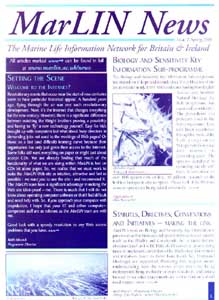
The Spring 2000 MARLIN newsletter was received on 12 April 2000. Almost all the articles can be viewed on their web site:
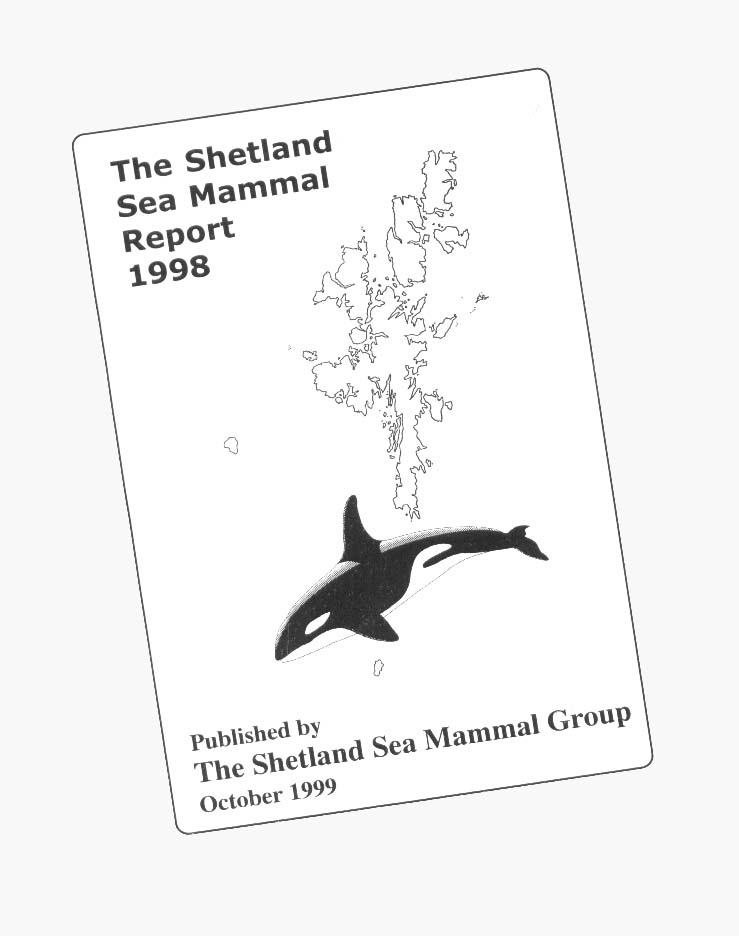
The Report is available from Pete Ellis, Sumburgh Lighthouse, Virkie, Shetland.
Cost £3.50
Television:
BBC 2: 2 March 2000 2.10 pm The Sea Eagle in Norway
BIOMAR
Picton, B.E. and Costello M. J. (editors). 1998. BioMar biotope viewer: a guide to marine habitats, fauna and flora of Britain and Ireland. Environmental Sciences Unit, Trinity College, Dublin. ISBN 0 9526 735 4 1
Copies are available on request from:
EcoServe, 17 Rathfarnham Road, Terenure, Dublin 6W, Ireland.
Fax + 353-1-492 5694. Email mcostello@ecoserve.ie.
They cost £10 + £2 P & P (standard economy rate).The database is very strong on the description of habitats
I have not really had a chance to explore this database yet. It is not comprehensive (e.g. Chondrus crispus not included) , but it has got to be worth the dosh just for the photographs and information on sea anemones.
The program requires an Internet browser to work fully.
FEATURED ARTICLE
-
PHOTO-IDENTIFICATION
OF NORTH ATLANTIC KILLER WHALES
by Paul Fisher & Edward G. Brown ***
~~~~~~~~~~~~~~~~~~~~~~~~~~~~~~~~~~~~~~~~~~~~~~~~~~~~~~~
During 1986 and 1987, a group
of scientists from nine nations co-operated in The North Atlantic Killer
Whale Project' to review information available on killer whales of their
respective regions. This culminated in a collection of papers on North
Atlantic Killer Whales' which was
published in a special issue
of Rit Fiskideildar, Journal of the Marine Research Institute, Reykjavik,
Volume XI, in 1988. Since then, a great deal of research on the movements
and distribution of killer whale pods in the North Atlantic has been carried
out by dedicated surveys that have managed to photograph a significant
number of killer whale pods. This has resulted
in the formation of photo-identification'
catalogues of killer whales in Norwegian and Icelandic waters.
Full Report at:
Shetland
Wildlife
News
& Information on the Wildlife of Shetland http://www.wildlife.shetland.co.uk/
Television:
11 February 2000. 12:45 am (early morning)
BBC 2 Learning Zone"Ascent of Man" by J. Bronowski Episode 1
CLOCKING CRABSHow can you tell the age of a crab? It may sound like the opening line of a joke but it's a problem that's been bothering Se-Jong Ju of the University of Maryland's Chesapeake Biological Laboratory. Unlike many other animals, crabs don't produce any permanent hard parts which means that researchers have no accurate way to work out how old they are. We look at a reliable new method which Ju says "should work on any crustacean".
NEW SCIENTIST WEEKLY NEWSLETTER
No 19 5 February 2000
More Information

Squid hold clues to the chemicals that shape our brains
EXPERIENCES during the first few weeks of a squid's life etch themselves permanently in its brain and help them hunt as adults, biologists in California have found. If scientists can track down the molecules that bring about these early changes, they may discover how the brains of animals and people are shaped as well.
Coastal Management for Sustainability
CMS 2000Review of Events in 1999 & Future Trends Report
Shorewatch Newsletter (BMLSS)
Volume
10 No. 1 Vernal/Summer 1999 issue
| FIVE KINGDOMS TAXONOMIC INDEX TO BRITISH
MARINE WILDLIFE
Use these links if your are familiar with the scientific classifications of marine life |
The BMLSS (England) site commenced on 1 January 1997.
|
|
|
|
|
News 2000 |
Membership Form |
|
Copyright © 2000-2005
British Marine Life Study Society
